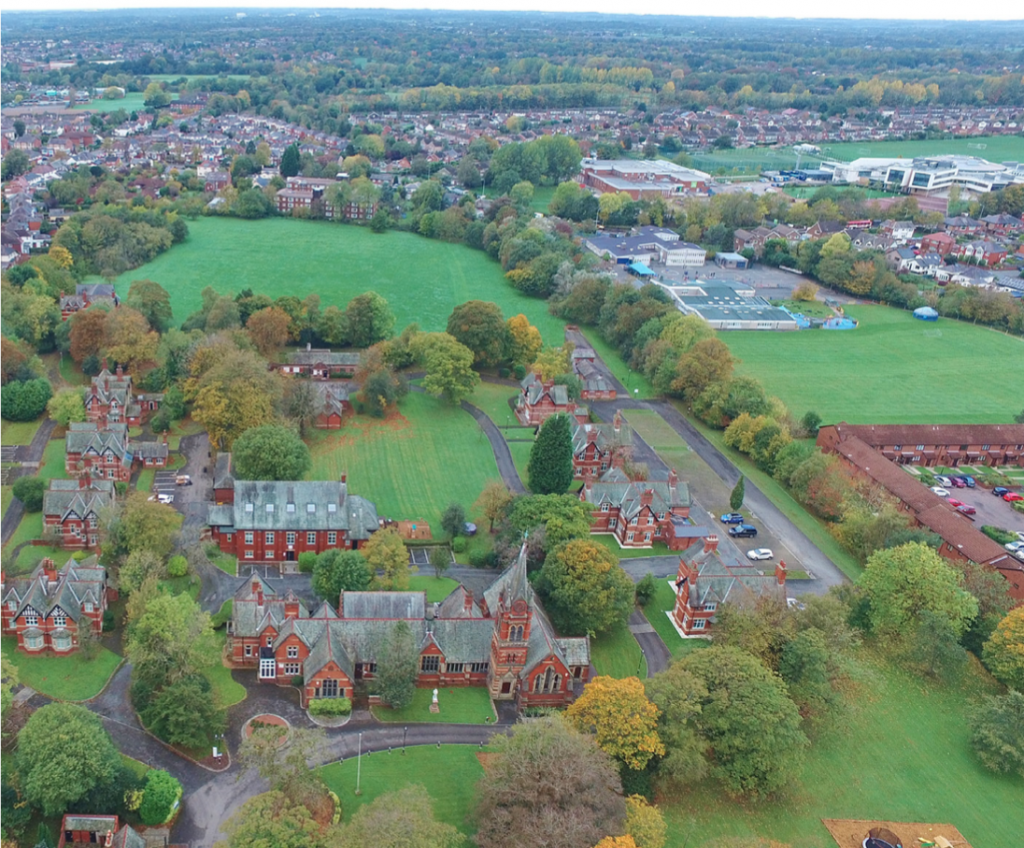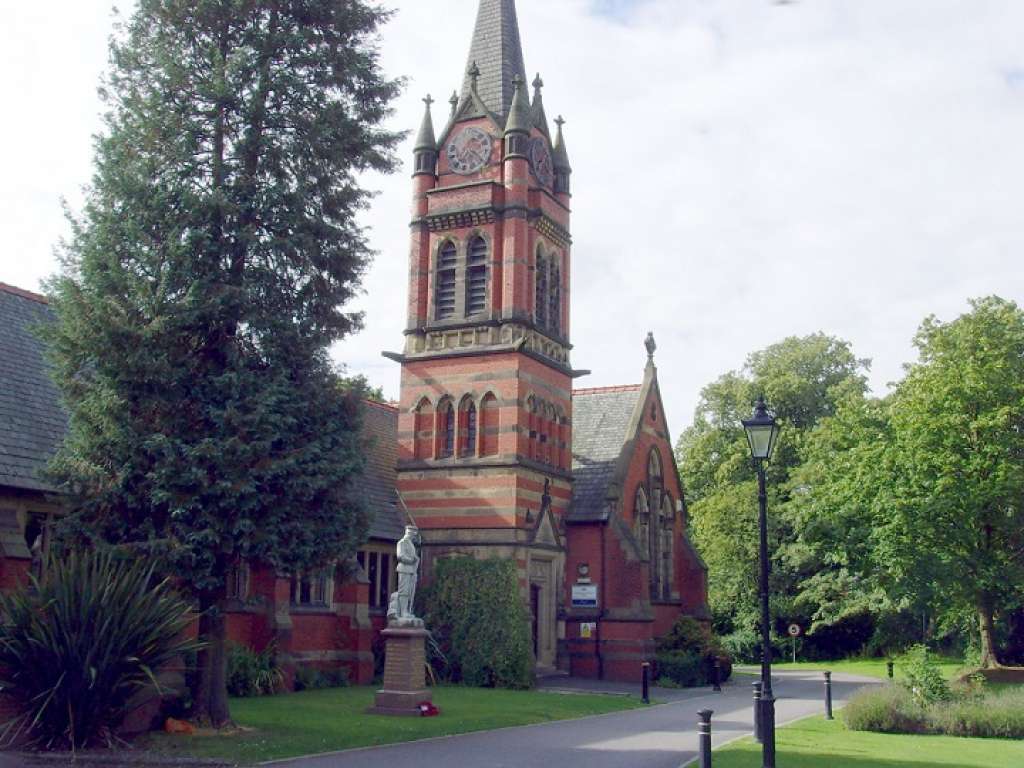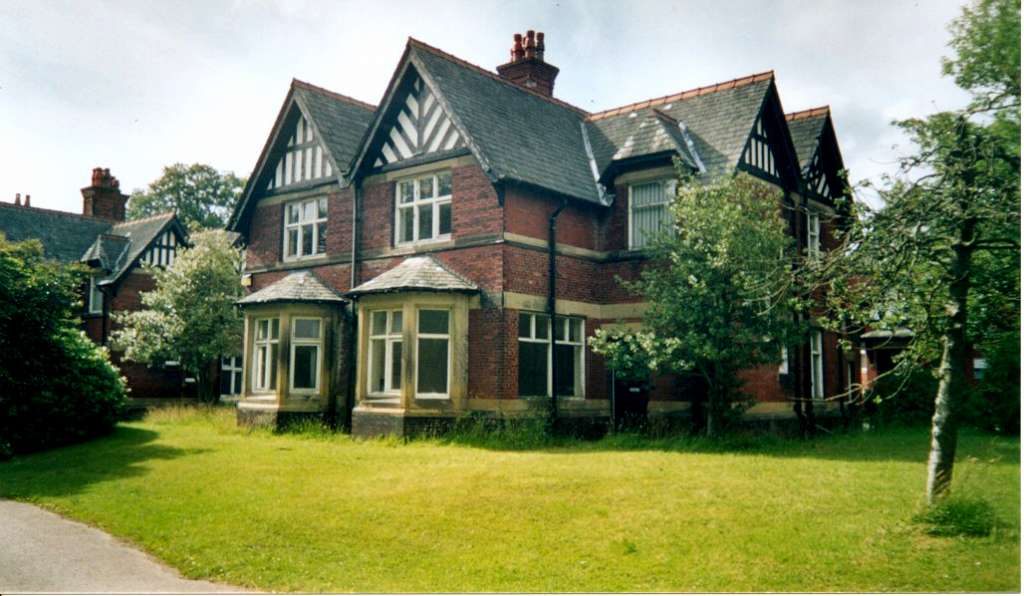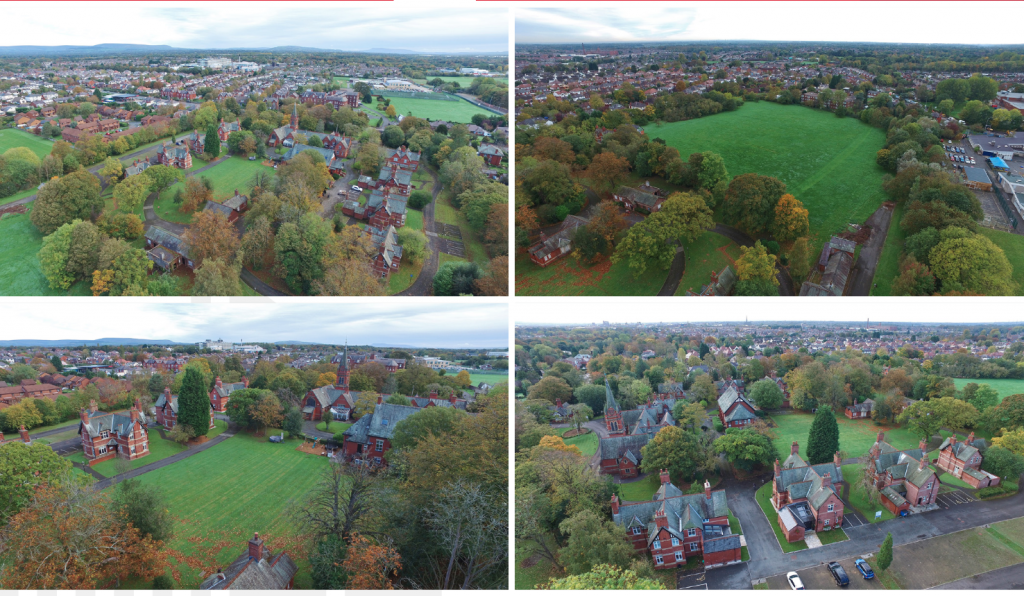PRESS RELEASE: Picturesque model village for Victorian Orphans under threat
27th November 2020
Planners will decide this coming Thursday 3rd December on a highly controversial development proposed in the landscaped grounds of a model orphanage in Preston, Lancashire. The 1880s Harris Park Orphanage is a protected grade II listed Park & Garden and a classified conservation area, containing 14 grade II listed buildings and structures.
The layout of the park broke with the pattern of large institutional buildings for orphaned children and took the form of cottage houses around a village green with extensive grounds for recreation. Boys and girls were housed separately in a series of attractive bright red brick gabled houses with big mullioned windows. The layout survives in largely unaltered condition and follows a pattern evolved by the famous Dr Barnardo.
The orphanage closed in 1982 and was leased to Preston Polytechnic, later the University of Central Lancashire as offices. The current application for 30 detached houses (7 detailed + 23 in outline) submitted by new owner Yusef Bhailok threatens to destroy the integrity and unique significance of Harris Park, and conflicts with its status as a listed Park & Garden and conservation area.
SAVE Britain’s Heritage has strongly objected to the plans, with Preston City Council recommending both the full planning application and listed building consent application are refused on the basis of substantial harm to the entirety of the Harris Park Conservation Area and grade II Listed Historic Park and Garden.
The planning officer's report states that the proposals would cause "substantial harm (to a high level) upon the character and appearance of the conservation area" and that the public benefits of the scheme claimed by the applicant "are limited and not substantial enough to outweigh the substantial harm identified.”
Marcus Binney, executive president of SAVE Britain’s Heritage says: “the Victorians delighted in laying out model villages with matching houses, often in ornamental styles. Most were built on large country estates, but they had an urban counterpart in Dr Barnardo's Homes, only two of which now survive. These model villages evolved from Blaise Hamlet near Bristol, created by the great John Nash architect of Buckingham Palace and are a precursor of the garden cities of the early 20th century. The Harris village is of exceptional quality and must be protected from intrusive development”.
Joanne Adams and Prema Taylor on behalf local campaign group Friends of Harris Park say: "Hidden behind high hedges and railings, Harris Park is one of Preston’s forgotten gems. Sadly, the grade II listed park has been in private ownership since 2007, left neglected and now in danger of being built over with a housing estate. As proud Prestonians, we are passionate about preserving what is left of our local history and heritage and passing it down to future generations. We therefore call on the city council planning committee to refuse these damaging plans.”
The park is announced by a single storey Tudor style lodge. Around the central green are eight houses for boys and girls, each with front and back gardens. There is a schoolmaster’s house, school building, school hall and chapel.
The landscaping was the work of Preston’s highly regarded Parks Superintendent George Rowbotham whose talents helped provide the city of Preston with some of the finest city parks in England. The buildings were designed by Benjamin Sykes.
Preston City Council Planning Committee is set to decide on the plans on Thursday, 3rd December 2020 and you can view the plans here: http://publicaccess.preston.gov.uk/swift/apas/run/wphmakerep.displayURL?ApnID=06/2020/0222 using reference numbers 06/2020/0222 & 06/2020/0223.
ENDS
Note to editors
1. For more information and images contact Ben Oakley, Conservation Officer at SAVE Britain's Heritage: ben.oakley@savebritainsheritage.org / 07388 181 181.
2. SAVE Britain’s Heritage has been campaigning for historic buildings since its formation in 1975 by a group of architectural historians, writers, journalists and planners. It is a strong, independent voice in conservation, free to respond rapidly to emergencies and to speak out loud for the historic built environment.




